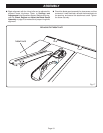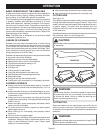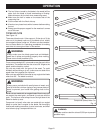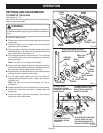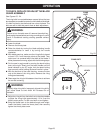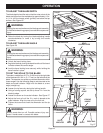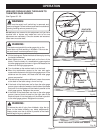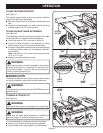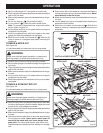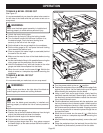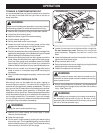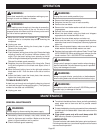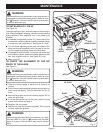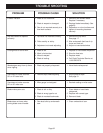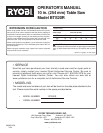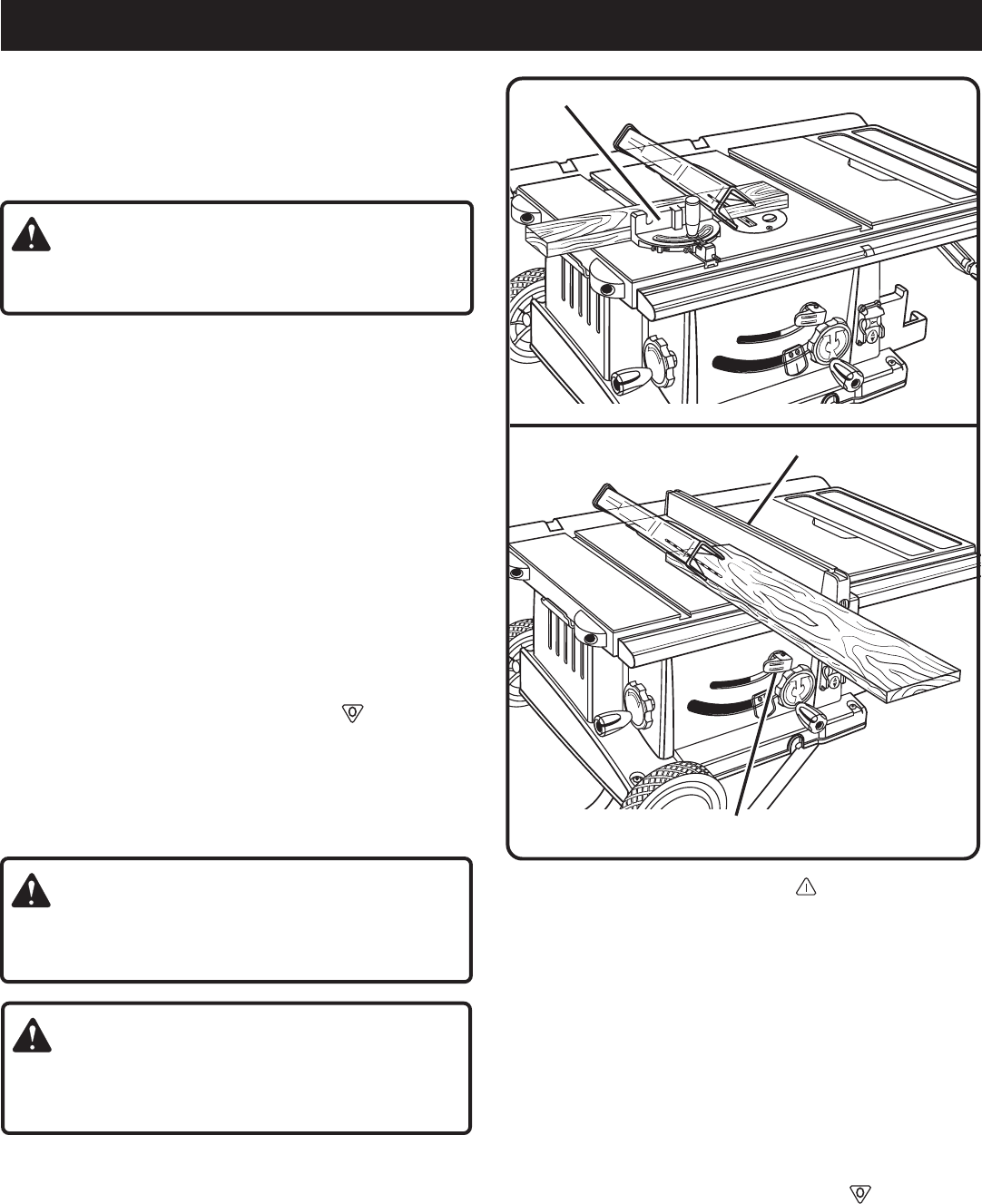
Page 28
+
-
+
-
OPERATION
TO MAKE A BEVEL CROSS CUT
See Figure 37.
It is recommended that you place the piece to be saved on
the left side of the blade and that you make a test cut on
scrap wood.
WARNING:
Make sure the blade guard assembly is installed and
working properly to avoid serious personal injury.
Unlock the bevel locking lever.
Remove the rip fence by lifting the locking handle.
Turn the bevel handle until the bevel indicator is at
the desired angle. Push the bevel locking lever
securely to the left to lock the angle.
Set the blade to the correct depth for the workpiece.
Set the miter gauge to 90° and press the bevel locking
lever towards the table to lock.
Place a support (the same height as saw table) behind
the saw for the cut work.
Make sure the wood is clear of the blade before turning
on the saw.
Let the saw blade build up to full speed before moving the
miter gauge and the workpiece into the blade.
Hold the workpiece firmly with both hands on the miter
gauge and feed the workpiece into the blade.
When the cut is made, turn the saw off ( ). Wait for the
blade to come to a complete stop before removing the
workpiece.
TO MAKE A BEVEL RIP CUT
See Figure 38.
It is recommended you make test cuts on scrap wood.
WARNING:
The rip fence must be on the right side of the blade to
avoid trapping the wood and causing kickback.
WARNING:
Make sure the blade guard assembly is installed and
working properly to reduce the risk of serious personal
injury.
Remove the miter gauge.
Position the rip fence the desired distance from the right
side of the blade and lock down the handle.
Adjust the bevel angle to the desired setting.
Set the blade to the correct depth.
If ripping a piece larger than 36 in. long, place a support
the same height as the table surface behind the saw for
the cut work.
Fig. 37
MITER GAUGE
Fig 38
RIP FENCE
BEVEL LOCKING LEVER
Turn the power switch to the on ( ) position.
Position the workpiece flat on the table with the edge flush
against the rip fence. Let the blade build up to full speed
before feeding the workpiece into the blade.
Using a push stick and/or push blocks, slowly feed the
workpiece toward the blade. Stand slightly to the side of
the wood as it contacts the blade to reduce the chance of
injury should kickback occur.
Once the blade has made contact with the workpiece, use
the hand closest to the rip fence to guide it. Make sure the
edge of the workpiece remains in solid contact with both
the rip fence and the surface of the table. If ripping a narrow
piece, use a push stick to move the piece through the cut
and past the blade.
When the cut is made, turn the saw off ( ). Wait for the
blade to come to a complete stop before removing the
workpiece.
After the blade has stopped completely, remove the cutoff
stock.
Grasp the workpiece from the lead end (the end fed into
the blade first) and carefully remove it from the table.



